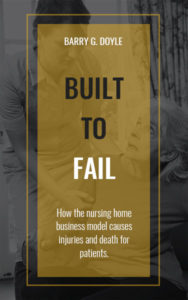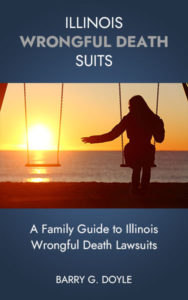The Illinois Department of Health has cited and fined Aperion Care Niles when staff failed to provide proper supervision and safety measures for a fall-risk resident who was left alone in her room without proper footwear and with her walker out of reach, resulting in a fall that caused a subdural hematoma requiring hospitalization.
The resident in question suffered from multiple health conditions including diabetes, difficulty walking, malnutrition, and a history of falling. This resident had moderately impaired cognition and needed assistance with basic activities like eating and moving between bed and chair.
On the day of the incident, the resident had gone out for a medical appointment with her son. When they returned to the nursing home, it was later than usual. Instead of taking the resident to the dining room where she typically ate under supervision, staff served her dinner in her room. The resident was seated in her wheelchair with the call button within reach, and she was instructed to call for help if she needed anything.
What happened next would prove critical – the Certified Nursing Assistant assigned to watch over the resident went on break. During this time, the resident attempted to stand up from her wheelchair. There were several factors working against her safety: her walker had been placed far away by the closet where she couldn’t reach it, she was wearing only socks without proper shoes, and there was no staff member present to supervise or assist her.
The resident lost her balance and fell face-first onto the floor. Another nursing assistant heard moaning coming from the room and discovered the resident lying on her stomach with a bruise on her forehead and blood on the floor. Staff quickly notified the nurse, who was working on a different floor at the time.
When the nurse arrived and assessed the situation, he found the resident on the floor with food still sitting on the table, indicating she had fallen while trying to move around during or after her meal. The resident had suffered a visible injury to her forehead. Following facility protocol, the nurse contacted the doctor, who ordered the resident to be transferred to the hospital.
At the hospital, doctors performed a CT scan that revealed an acute subdural hematoma – bleeding between the brain and its outer covering. The hospital physician noted that the resident was drifting in and out of consciousness, complaining of neck pain, and unable to answer questions coherently. After several days of hospitalization, the resident was returned to the nursing facility.
In the aftermath of this serious incident, nursing home leaders acknowledged that the fall could have been prevented through proper supervision. Multiple staff members admitted that if the resident had been placed in the dining room or near the nurses’ station for closer monitoring, if her walker had been kept within reach, or if she had been wearing proper footwear instead of slippery socks, the fall might not have occurred.
The facility’s own fall prevention policy emphasized the importance of keeping assistive devices like walkers within reach and ensuring residents wear proper non-skid footwear. Yet in this case, both of these basic precautions were overlooked.
The nursing home’s failures in this case represent a troubling pattern seen in many long-term care facilities – basic safety protocols that exist on paper but aren’t consistently followed in practice. Despite knowing the resident’s high fall risk and having documented a history of previous falls, staff made a series of critical errors: serving her in an isolated location rather than a supervised common area, leaving assistive devices out of reach, failing to ensure proper footwear, and not providing adequate supervision when the assigned caregiver went on break.
These shortcomings point to potential issues with staffing levels, training effectiveness, and the facility’s culture of safety. While corrective measures were implemented after the incident, they came too late to prevent a potentially life-threatening brain injury to a vulnerable resident who depended on the facility for protection.
One of our core beliefs is that nursing homes are built to fail due to the business model they follow and that unnecessary accidental injuries and wrongful deaths of nursing home residents are the inevitable result. Our experienced Chicago nursing home lawyers are ready to help you understand what happened, why, and what your rights are. Contact us to get the help you need.


